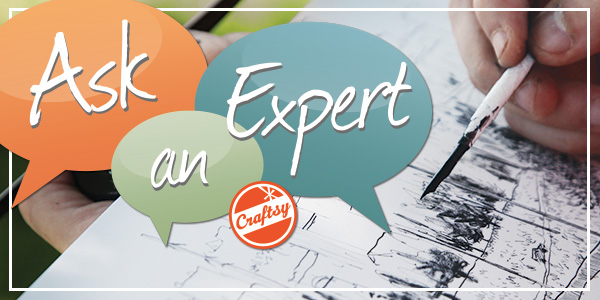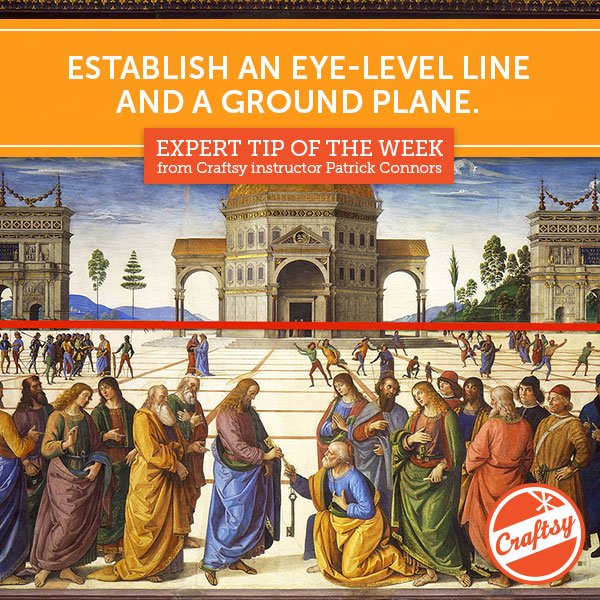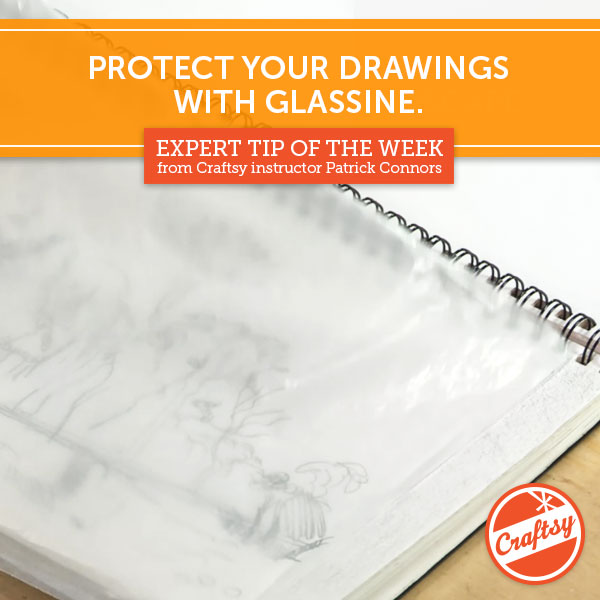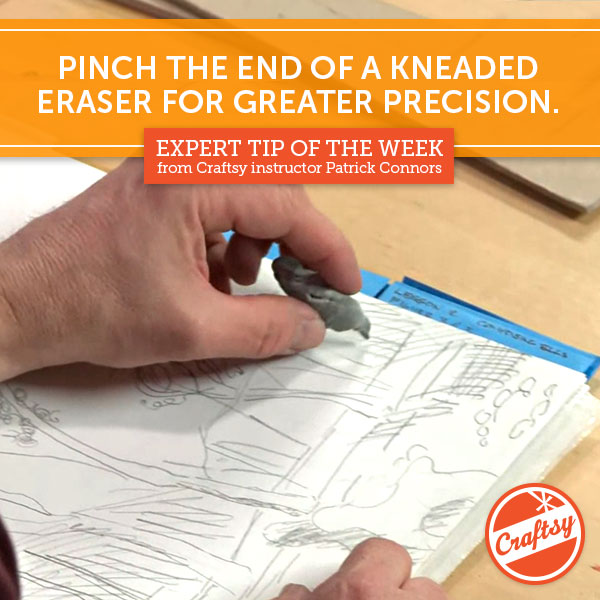In Ask An Expert we share advice directly from our experts, in response to popular questions asked by our members. So be sure to submit your questions and tune in every Sunday for answers. In this edition of our weekly drawing series, professional artist Patrick Connors stops by the blog to explain the best way to remove debris from your work and get back to drawing. Plus, he talks about the benefits of the helpful yet often misunderstood kneaded eraser.

Meet this week’s expert: Craftsy Instructor, Patrick Connors.
Patrick Connors is a Philadelphia-based easel painter with work exhibited throughout the country as well as internationally. He has taught at the Graduate School of the New York Academy of Art, Janus Collaborative, Studio Incamminati, the Pennsylvania Academy of the Fine Arts and the Institute of Classical Architecture: Manhattan and Rome Programs. He is also the instructor of the online Bluprint class, Perspective in Landscape Drawing.
Now onto the must-have answers:

A Bluprint student asks:
How do you feel about using a dusting/drafting brush to clean up your work area when you draw at home? Are these brushes a useful tool or really not necessary when you can use your hand to get rid of dust and shavings?
Bluprint instructor Patrick Connors answers:
Dust and detritus from rubber erasers should both be removed with a simple, soft brush. Resist the urge to wipe the drawing with your hand or blow on it. The moisture from your breath will immediately lock in anything on the drawing, making that area difficult to work on top of or erase later on. The oil on your hands will also lock in anything on the page, as well as eventually discoloring the paper.

A Bluprint student asks:
What do you think about using kneaded erasers when drawing with pencils?
Bluprint instructor Patrick Connors answers:
The kneaded eraser is very good for erasing charcoal, but some people prefer it for working with pencil. The ideal way to use it is not to rub, but to press, rotate and pull the eraser away from the paper. With these erasers, you also need to periodically pull and fold the eraser, kneading it. Kneaded erasers are especially useful because they can be modeled to a point, and used in a very exacting way to remove tiny imperfections.

Any other advice before you go, Patrick?
Over the past 20 years the most important part of my artistic development remains the frequent re-immersion into the basics of drawing, linear perspective, and pictorial structures of chiaroscuro, composition, and chroma. This seemingly paradoxical return to the basics as a mature artist have given me a means of not only accuracy but one for expression that reflects deeper on the nature of humanity.

Special offer!
For more guidance from professional artist Patrick Connors, sign up for his online Bluprint class Perspective in Landscape Drawing for 25% off today (a special offer for our blog readers!)
Gain exclusive, lifetime access to his insights and answers to all your questions!

[box type=”shadow”]
Do you have a drawing question you’d like our experts to answer?
[/box]

Share tips, start a discussion or ask one of our experts or other students a question.
No Responses to “Ask an Expert: The Right Way to Remove Debris from Drawings”